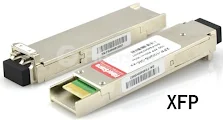Over the years, data centers have witnessed the enormous increase in data-carrying capacity and constant innovation in optical standard products for higher-level networking services. Greater bandwidth, higher port density, longer distance reach, as well as lower power consumption, all these have populated the deployment of fiber links for high-performance optical networks. To establish such fiber links, pluggable modules, one of the key instruments, are needed in ensuring the high-speed, accurate and secure data transmission. These pluggable optical modules provide customers with flexible options for their interfaces, serving as the convenient and cost-effective solution for a comprehensive range of applications in data centers.
There are a variety of pluggable optical modules available for different uses, including Gigabit Interface Converters (GBICs), Small Form-Factor Pluggable (SFP), SFP+, XFP, C Form-Factor Pluggable (CFP), Quad Small Form-Factor Pluggable (QSFP+), etc. This text mainly gives the technical overview on three types: SFP, XFP, and SFP+.
This bidirectional device, SFP module, is a compact, compatible and hot-swappable transceiver, supporting short or long distance transmission. It contains a transmitter and a receiver in the same physical package.
SFP modules are commonly available in several different categories:
- 1000BASE-SX—It’s a fiber optic standard Gigabit Ethernet (GbE) standard for operation over multi-mode fiber (MMF) using a 770 to 860nm near infrared (NIR) light wavelength.
- 1000BASE-LX—This standard is specified to work over a distance of up to 5km over 10µm single-mode fiber (SMF). It can also run over all common types of MMF with a maximum segment length of 550m.
- 1000BASE-T—Also known as IEEE 802.3ab, this standard is designed for GbE over copper wiring (Cat-5, Cat-5e, Cat-6, Cat-7). 1000BASE-T uses all these four twisted-pair cabling for simultaneous transmission in both directions through the use of adaptive equalization and a five-level pulse amplitude modulation (PAM-5) technique with a maximum length of 100m. Take GLC-TE for example, this Cisco compatible 1000BASE-T SFP listed in Fiberstore is able to realize 100m link length with copper RJ-45.
The SFP+ module is an enhanced version of the SFP transceiver developed to support data rates up to 16 Gbit/s. The SFP+ specification was first published on May 9, 2006, and version 4.1 published on July 6, 2009. SFP+ supports 8Gbit/s Fibre Channel, 10 GbE and Optical Transport Network standard OTU2.
Just like the SFP, the SFP+ module is also a bidirectional device with a transmitter and receiver in the same physical package. The image below shows the SFP+ module block diagram.
- Transmitter: In the transmit direction, the SFP+ module receives an electrical signal from the host board Asic/SerDes and converts the data to an optical signal through the laser driver that controls the laser diode in the Transmitter Optical Sub-Assembly (TOSA).
- Receiver: In the receive direction, the transceiver module receives an optical signal through a photodiode mounted together with a trans-impedance preamplifier(TIA), and converts it to an electrical equivalent. Depending on the SFP+ architecture, either a limiting or a linear electrical interface will be implemented on the module.
For a limiting interface, the host ASIC Receive Equalizer compensates the printed circuit board (PCB) trace impairment between the module and the ASIC.
For a linear interface, the host Electronic Dispersion Compensation (EDC) provides the adaptive signal processing that is capable of compensating for impairments due to optical fiber, connector, electro-optics and PCB trace effects.
I2C Management Interface: The third functional capability of the SFP+ module is the 2-wire serial, I2C, interface. I2C is used for serial ID, digital diagnostics and module control functions. The enhanced digital diagnostics monitoring interface allows real-time access to the device, allowing monitoring of received optical power, laser bias current, laser optical output power, etc.
This module (10Gigabit SFP) is also a bidirectional device with a transmitter and receiver in the same physical package.
- Transmitter :In the transmit direction, the XFP module receives a 10-Gbps electrical data signal and converts it to an optical signal through an electrical to optical converter. The optical output power is held constant by an automatic power control circuit. The transmitter contains a Clock Data Recovery (CDR) circuit. The function of this circuit is to attenuate and reshape any jitter received on the electrical interface.<
- Receiver: In the receive direction, the XFP module receives a 10-Gbps optical signal and converts it to an electrical equivalent. The receiver contains a CDR circuit.
These small pluggable optical modules extend distance reach, allowing easy replacement in case that component failures would happen. Fiberstore offers a wide range of transceiver modules, like SFP (GLC-TE), SFP+, XFP, QSFP+ (eg. JG325B). They all are fully compatible with major brands, test-assured and cost-effective. For more information about transceiver modules, you can visit Fiberstore.




Post a Comment